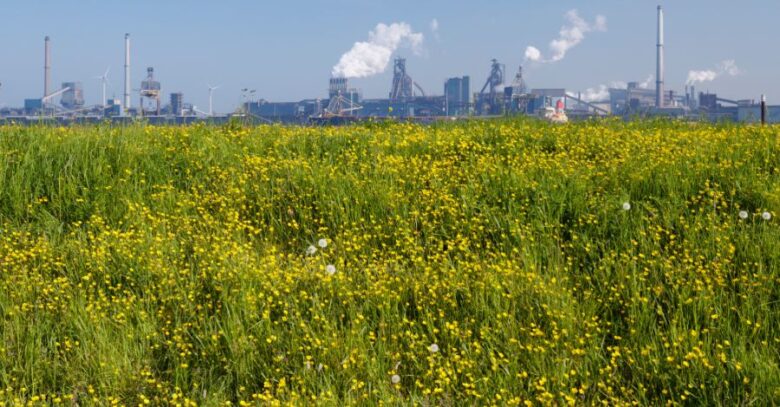Bio-mimicry, also known as biomimetics, is a fascinating field that draws inspiration from nature to solve complex problems and improve various aspects of human life.
While often associated with engineering and design, bio-mimicry also offers valuable insights for process safety in industries.
This article explores how lessons from the natural world can be applied to enhance process safety protocols and mitigate risks.
Understanding Bio-Mimicry
Bio-mimicry is a multidisciplinary approach that seeks inspiration from nature to solve human challenges.
It involves studying the forms, functions, and processes found in the natural world and applying them to design innovative solutions.
In the context of process safety, bio-mimicry offers a unique perspective by harnessing the wisdom of billions of years of evolution.
Lessons from Natural Structures and Systems
Nature is a master of efficient and sustainable design. By examining natural structures and systems, we can uncover valuable insights for process safety.
For example, the hexagonal honeycomb structure of bees not only provides strength and stability but also enables efficient use of resources. Applying this principle, industries can design structures that optimize material usage and improve safety.
Similarly, the circulatory system in plants, with its interconnected network of vessels, can inspire the design of efficient and robust industrial piping systems. By mimicking the branching patterns and adaptability of natural networks, industries can enhance the flow of materials and reduce the risk of leaks or blockages.
Drawing Lessons from Animal Behavior
Animal behavior offers a wealth of inspiration for process safety. The flocking behavior of birds, for instance, showcases the power of coordination and collective decision-making. By understanding how birds communicate and synchronize their movements, industries can improve emergency response protocols and optimize safety procedures during critical incidents.
Ant colonies also provide valuable lessons in efficiency and resilience. Ants work collaboratively, communicate effectively, and exhibit remarkable problem-solving abilities. By emulating their behavior, industries can foster a culture of teamwork, effective communication, and adaptability, which are vital for managing risks and ensuring process safety.
Moreover, studying the navigational abilities of migratory birds or the sonar systems of dolphins can inspire the development of advanced monitoring and sensing technologies. These natural systems can enhance early detection of potential hazards and enable proactive risk mitigation strategies.
By closely observing and understanding the behavior of animals, we can unlock innovative approaches to process safety. These insights can guide the development of new protocols, procedures, and technologies that harness the wisdom of nature and improve risk management in industrial settings.
Applying Lessons to Risk Mitigation
Applying the lessons learned from nature to risk mitigation is a key aspect of bio-mimicry in process safety. By understanding the strategies and mechanisms that nature has developed over millions of years, industries can improve their risk management practices and minimize potential hazards.
For example, in the field of risk mitigation, the concept of redundancy is often inspired by biological systems. Biological organisms have evolved redundant structures and functions to ensure their survival. Similarly, industries can implement redundant systems and backup mechanisms to prevent single points of failure and enhance overall safety.
Bio-mimicry in Industrial Design and Equipment
Bio-mimicry principles can be applied to the design and development of industrial equipment, leading to improved safety and performance. By studying the forms and functions found in nature, engineers can create more efficient, sustainable, and reliable equipment.
For instance, the streamlined shape of fish or birds can inspire the design of more aerodynamic industrial equipment, reducing energy consumption and enhancing operational efficiency. The ability of geckos to adhere to various surfaces can inform the development of adhesives or gripping mechanisms for safer handling of materials.
Additionally, the self-healing properties of certain organisms can inspire the development of self-repairing materials or structures in industrial settings. Such materials can detect and repair damage automatically, minimizing the risk of failures and improving overall safety.
Bio-mimicry in Chemical Processes
Chemical processes can benefit from bio-mimicry by emulating the efficient and sustainable processes found in living organisms. For example, enzymes are nature’s catalysts that enable chemical reactions to occur under mild conditions. Understanding and imitating these natural processes can lead to the development of more efficient and environmentally friendly industrial processes.
By incorporating bio-inspired catalysts or mimicking biological pathways, industries can reduce the need for harsh chemicals, lower energy consumption, and minimize waste generation. These bio-inspired approaches can contribute to safer and more sustainable chemical processes, reducing potential risks to both human health and the environment.
Incorporating bio-mimicry into industrial design and chemical processes requires interdisciplinary collaboration between biologists, engineers, and chemists. By embracing the principles of bio-mimicry, industries can develop innovative solutions that improve safety, efficiency, and sustainability while minimizing the potential risks associated with their operations.
Nature’s Solutions to Environmental Challenges
Nature has evolved ingenious solutions to address environmental challenges over millions of years. By studying and emulating these solutions, industries can develop more sustainable and eco-friendly processes that mitigate environmental risks.
For example, plants have developed efficient mechanisms to capture and store carbon dioxide, mitigating climate change impacts. Industries can draw inspiration from these natural processes to design carbon capture and storage systems that reduce greenhouse gas emissions and combat climate change.
Additionally, the natural water purification systems found in wetlands and forests can inspire the development of eco-friendly wastewater treatment technologies. By replicating these natural processes, industries can reduce the release of harmful pollutants into water bodies and protect aquatic ecosystems.
Collaborating with Biologists and Ecologists
Collaboration between engineers, biologists, and ecologists is essential for successful implementation of bio-mimicry in process safety. Biologists and ecologists possess valuable knowledge about the intricate workings of natural systems, enabling them to identify relevant biological principles and provide guidance for their application in industrial settings.
By engaging in interdisciplinary collaborations, engineers can gain a deeper understanding of the biological principles and ecological relationships that underpin nature’s solutions. This collaboration can lead to more effective and sustainable risk management strategies, as well as the identification of new opportunities for bio-mimicry.
The Role of Innovation and Research
Innovation and research play a pivotal role in advancing bio-mimicry applications in process safety. Continued investment in research and development is essential for uncovering new insights from nature, refining bio-mimetic designs, and identifying novel applications.
Furthermore, innovation can drive the development of bio-inspired technologies and materials that enhance safety and sustainability in various industries. This includes the exploration of new materials that mimic the unique properties found in nature or the development of novel sensors and monitoring systems inspired by natural sensing mechanisms.
By fostering a culture of innovation and supporting research initiatives, industries can stay at the forefront of bio-mimicry advancements. Collaboration between academia, industry, and research institutions can facilitate knowledge exchange, promote the development of practical applications, and accelerate the integration of bio-mimicry principles into process safety practices.
Conclusion
Bio-mimicry offers a wealth of untapped potential for improving process safety in industries.
By drawing lessons from the natural world, including structures, systems, behavior, and ecological relationships, industries can develop innovative solutions to mitigate risks and enhance safety protocols.
Collaboration between engineers and biologists, coupled with a commitment to ongoing research and innovation, will further propel the application of bio-mimicry in process safety.
As we continue to explore and learn from nature, we can unlock the unusual lessons it holds and create safer and more sustainable industrial processes.




